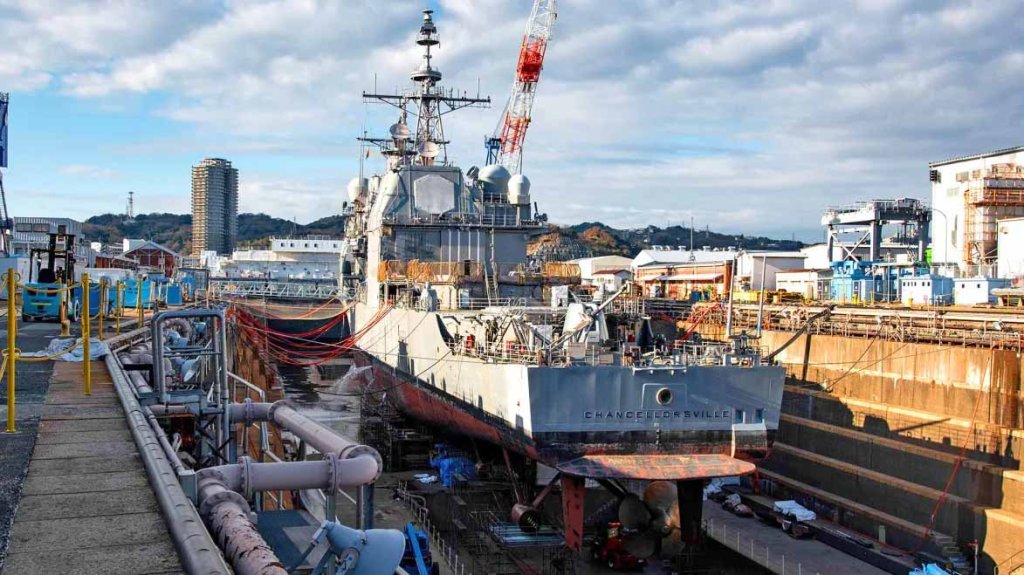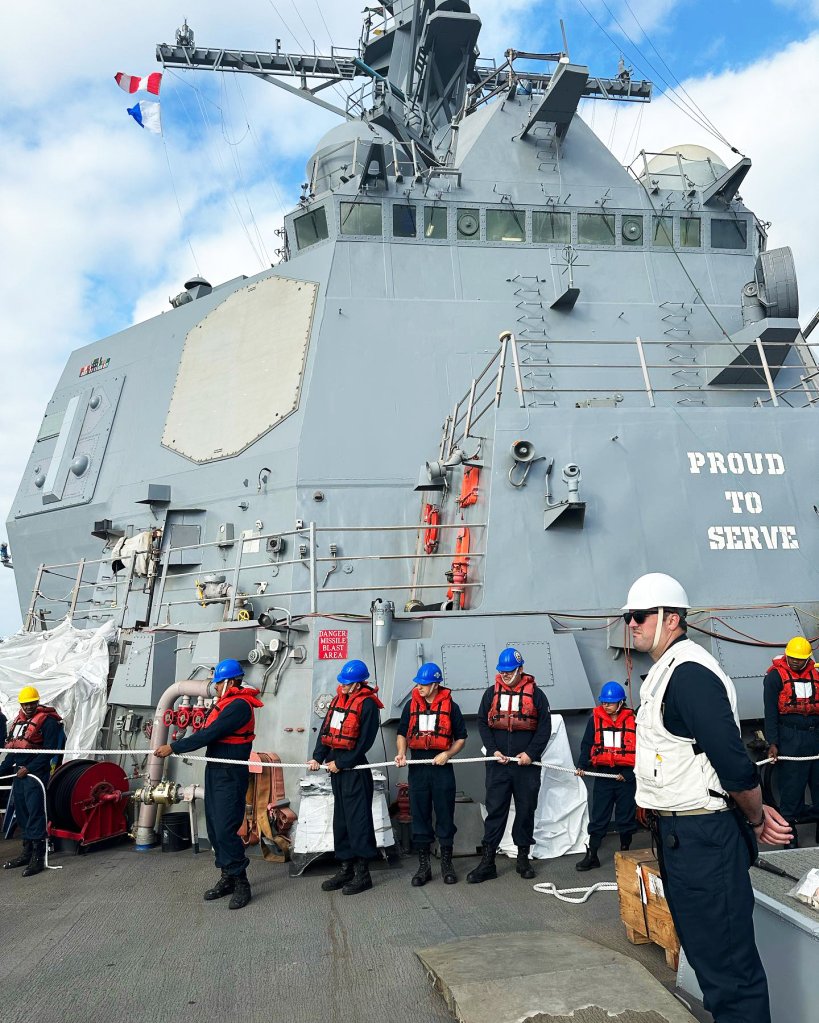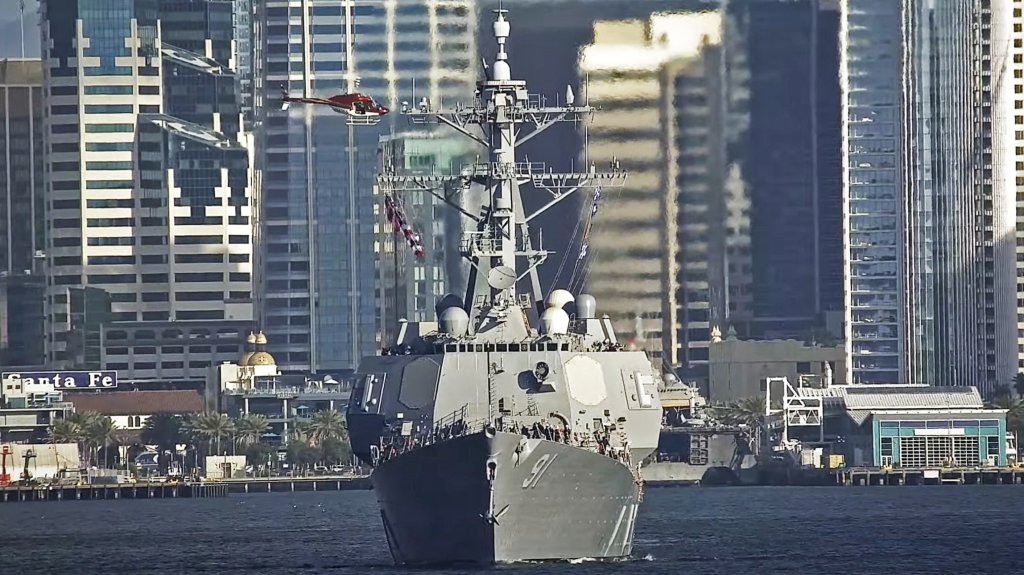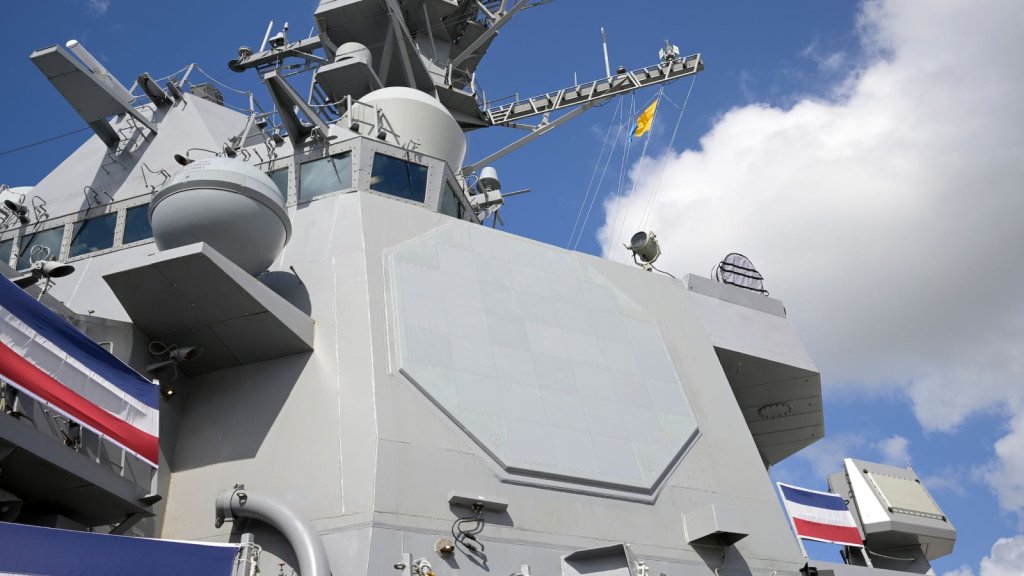As the U.S. Navy proceeds with modernizing its Flight IIA Arleigh Burke class destroyers with advanced electronic warfare, radar and combat systems upgrades, the head of the so-called DDG Modernization 2.0 program said the service has learned lessons from its deeply troubled Ticonderoga class cruiser modernization efforts, and several guardrails are in place to avoid similar pitfalls.
TWZ has reported extensively on the congressionally mandated cruiser modernization effort, and how nearly $4 billion was spent modernizing seven of the ships, which have for years served in the air defense commander role for carrier strike groups (CSG), among other missions. But of those seven large surface combatants, none ended up gaining the extra five years of service life originally envisioned.

Instead, nearly half that money was wasted modernizing four cruisers that never returned to sea and were retired by the Navy, according to a Government Accountability Office (GAO) assessment, which warned that efforts like DDG Modernization 2.0 carried the same risks if the Navy didn’t learn from its mistakes.
But as DDG Modernization 2.0 continues, with one Burke returning to the water after the first phase of modernization and three slated to follow this calendar year, several aspects of that program seek to prevent a repeat of the cruiser fiasco, Capt. Timothy Moore, DDG Modernization 2.0 program manager, told TWZ in an interview late last week.
“We’re taking some of the bad things that happened during cruiser modernization and properly implementing them, with the oversight at the O-6 level, to support an effective program and keep us ahead of the game as we modernize and resend these ships back out to the fleet,” Moore said.
While implementing best practices from other modernization or new Navy construction programs to “avoid any of the pitfalls that occurred during the cruiser modernization era,” the directive standing up DDG Modernization 2.0 also called for a major program manager – an executive tasked with overseeing a complex Navy program or organization – to run the effort, he added.
“That in itself gives the acquisition and technical rigor to this program that you did not see during the cruiser modernization timeline,” Moore said.
DDG Modernization 2.0 also involves an independent cost estimate of the initiative “to make sure we are true to ourselves when it comes to the true cost of this program,” he said, adding that a formalized acquisition strategy and integrated master schedule have also helped keep the program running smoothly thus far.
Navy officials have not responded to TWZ requests for costs and other information regarding the effort, but TWZ has in the past reported that the program was slated to cost $10 billion to modernize 23 destroyers. The USS Pinckney (DDG-91) is the lone destroyer to complete the first upgrade phase in late 2023. Moore said three destroyers currently undergoing the work are slated to come out of that maintenance availability later this year with the first phase completed and returned to the fleet.

TWZ previously reported that those ships are the USS James E. Williams (DDG-95), USS Chung Hoon (DDG-93), and USS Halsey (DDG-97). While such work is done in two phases, USNI News’ Aaron-Matthew Lariosa reported last week that the USS Sterrett (DDG-104), will be the first destroyer to receive all upgrades in one availability. Such work generally takes two years, according to Moore, who stressed the Navy is still “very early” in its efforts.
“We are pretty much hitting the mark with our redelivering these ships back to the fleet in a timely manner, according to the schedule and the contracts that we have in place,” he said.
The work is being done during a destroyer’s mid-life upgrade, or around 15 years into service, which ensures they are not being pulled out in a way that disrupts fleet operations, Moore said. Schedules for the upgrades can also depend on the ship’s operational schedule.
“But with these ships, and because they are destroyers, which are pretty much sort of the workhorses of the Navy, which we’ve kept maintained pretty well, we are able to meet on-time redelivery of these ships back to the fleet,” he said.
Pinckney got back underway in late 2023 sporting an enlarged superstructure with geometric structures extending off the port and starboard bridge wings, leading some online wiseacres to dub it a “muffin top” destroyer.

That top-heavy look is due to the AN/SLQ-32(V)7 Surface Electronic Warfare Improvement Program Block III, or SEWIP Block III, electronic warfare system installed on the warship during modernization. You can read more about the destroyer’s new ‘supersized’ look in this past post of ours.
“Those sponsons are housing some of the electronics required to support that expanded capability,” said Moore, who declined to provide further details in an unclassified setting.
TWZ has regularly reported on SEWIP Block III’s groundbreaking features:
“Northrop Grumman’s SEWIP Block III suite itself represents a revolutionary capability leap over previous iterations of the AN/SLQ-32 system. The new variant features active electronically scanned array (AESA) technology capable of putting out powerful and highly focused bursts of radio-frequency energy that can be used to launch electronic attacks on multiple targets along different vectors simultaneously. It also has advanced capabilities to detect, geolocate, and categorize threats passively. The system’s arrays have the potential to also be used as radars and communications nodes.”

Upgraded destroyers will also eventually sport the AN/SPY-6(V)4 radar. As TWZ has reported, the AN/SPY-6(V)4 radar is a scaled-down version of the AN/SPY-6(V)1 Air and Missile Defense Radar (AMDR) that is a key component of the Flight III Arleigh Burke design. All AN/SPY-6 radars sport active electronically scanned arrays and are comprised of groups of cube-shaped Radar Modular Assemblies (RMAs). The (V)1 version has four fixed arrays each with 37 RMAs. The (V)4 has four fixed arrays, as well, but with 24 RMAs apiece.
“We are upgrading the Aegis Combat System’s baseline 10, which will match that SPY-6 radar,” he said. “And then we’re also, because of the increased requirement for cooling, replacing the air conditioning plants with the high-efficiency, super-capacity chillers, which are currently resident in the Flight III and some of our other amphibious platforms.”

While such superstructure alterations add weight to the ship, the Navy has added ballast aft of the ship so that it “still rides very well,” Moore said.
“From my conversations with the [Pinckney] CO, she handles very well out to sea, and you don’t really notice that extra bulk on the port and starboard sides, other than visually,” he said.
TWZ reported this week on how the Navy is increasingly using Flight IIA destroyers as the air defense commander for carrier strike groups (CSG), a role traditionally filled by the retiring cruisers. A warship serving as a CSG air defense commander is responsible for tracking any and all objects in the sky for the CSG, and coordinating actions across the CSG to investigate and, if need be, neutralize those threats. They are the nerve center of the air warfare fight and have the ability to use all the air defense assets in the CSG to achieve their objectives.
While that initiative is distinct from DDG Modernization 2.0, Moore said ships like the Pinckney that undergo the upgrades “will be good candidates” to serve as air defense commander in the future.
“That depends on the demands of the fleet,” he said.
As the Navy awaits more of its Flight IIIs to come online, a Burke variant that is being afflicted by cost increases and delivery delays, efforts like DDG Modernization 2.0 seek to ensure that American destroyers remain the versatile and survivable workhorses of the surface fleet. Such expanded capabilities could prove crucial in a future war with China that military brass have been warning about for years.
Contact the author: geoff@twz.com
